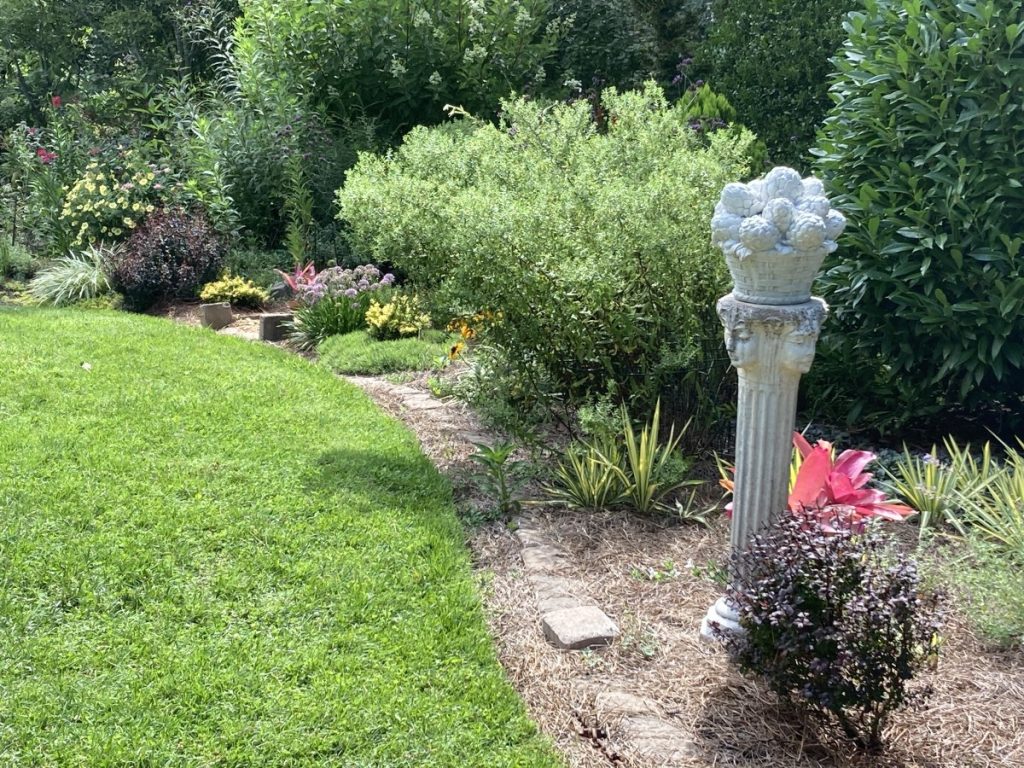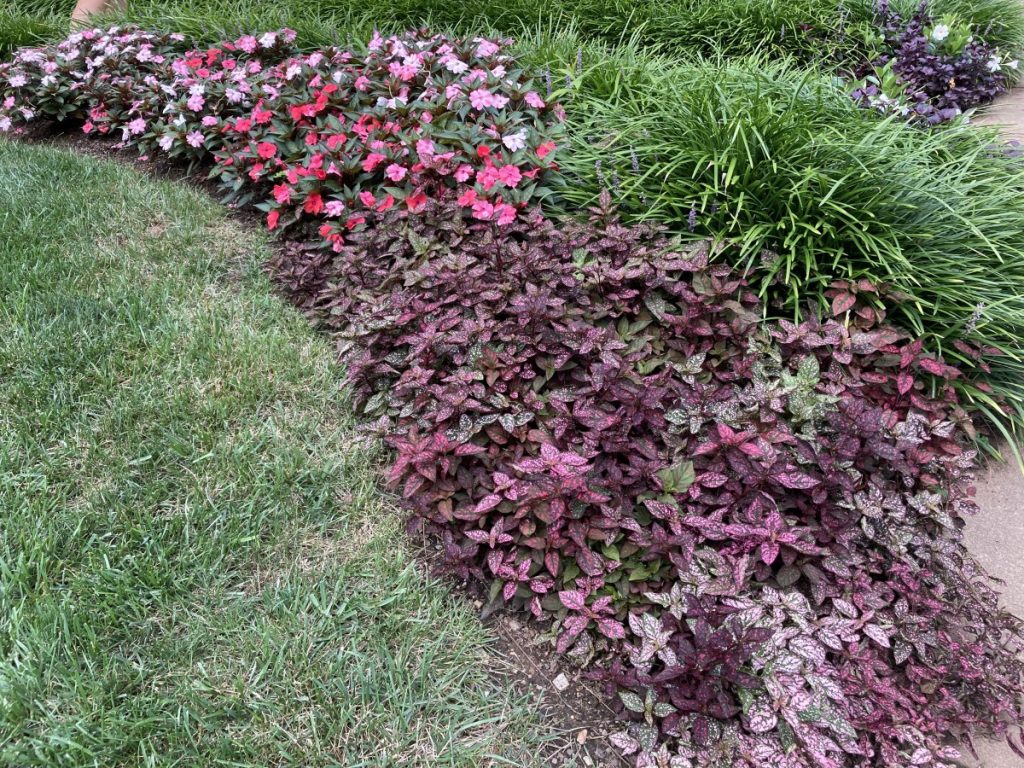
I visited Asheville twenty-five years ago for a pre-conference garden tour weekend but never really got to know the city at all. This year, at the end of July and beginning of August, I returned with my husband to enjoy a weekend stay and chef dinners at a bed and breakfast where we met some really interesting people. We also enjoyed some of the great restaurants for lunch in this funky, foodie city.
Then we moved on the Embassy Suites for the Perennial Plant Association national conference. It was the fortieth anniversary of PPA and I’m happy to say that I have now attended thirty-seven of the conferences. The best part was catching up with my “family”, my long-time friends who I only see once a year but the garden tours are always invaluable for the ideas that I can use in my garden or my clients’ gardens.
Gardening in Asheville is definitely a challenge. It’s in the Smoky Mountains and there is very little flat land. Touring gardens there was also a physical challenge – lots of slopes and steps.

At one of the nurseries we visited, I saw a raised bed full of large alliums (probably A.christophii) that had been spray-painted purple; they were used to reinforce the pink and purple color palette of Phlox paniculata and Agastache ‘Royal Raspberry’.

I was fascinated by a small tree with large leaves that I saw in one of the private gardens. I quickly learned that Paulownia tomentosa (Princess Tree) when normally left to grow, becomes quite large, 30-70’ tall, but can be cut close to the ground in early spring. A little research has taught me that this tree is quite drought and cold tolerant.

It had never occurred to me that I could winter over colorful bromeliads in my garden room that has a skylight and window walls. Then in May, I could leave them in their pots but use them throughout the garden for extra spots of color.

At the North Carolina Arboretum, I saw an eye-catching orange and lime color combination of Phygelius, Echinacea Primo Lime, and Verbascum ‘Dark Eyes’. If I wanted to substitute a perennial for the tender Phygelius, I could use either a short orange Agastache or Kniphofia.

Annuals are frequently planted too far apart to have any impact but in one of the gardens, New Guinea Impatiens and Hypoestes were massed to great effect.
I’m happy to say that I feasted on both food and plants while in Asheville and I hope that sharing some of what I saw will be beneficial to you.


0 Comments